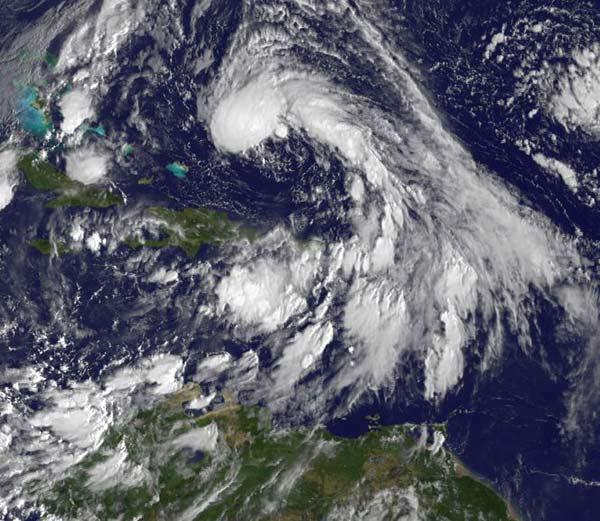Hurricane Season Not Over Yet: Subtropical Storm Otto Forms


Earlier this afternoon (Oct. 6), a subtropical depression that had been lurking to the east of the Caribbean developed into a subtropical storm now dubbed Otto.
Otto makes the 15th named storm of the 2010 Atlantic hurricane season. Named storms include tropical storms and hurricanes.
Otto is a little different than its predecessors so far this season in that it is actually a subtropical storm. Subtropical cyclones differ from tropical cyclones because they have broad wind patterns and their maximum sustained winds are located farther from the center of the system than tropical cyclones. (Tropical cyclone is the generic name for tropical storms, hurricanes and typhoons.)
Subtropical storms also usually have colder temperatures in upper levels of the atmosphere than tropical cyclones (which have very warm cores). Finally, sea surface temperatures required for the formation of sub-tropical storms are about 5 degrees Fahrenheit (2.8 degrees Celsius) cooler than needed for a tropical cyclone to develop.
Otto has maximum sustained winds of 60 mph (95 kph), and could strengthen further over the next 48 hours, according to the National Hurricane Center. The NHC predicts that Otto could become a tropical storm and then a hurricane by Thursday night or Friday morning.
The NHC warned that heavy rains might fall on the Leeward islands, Virgin Islands and Puerto Rico.
The 2010 hurricane season was predicted to be a busier-than-average one, with 17 named storms, 10 of which were expected to become hurricanes. So far there have been six hurricanes this season. An average hurricane season, in comparison, has 11 tropical storms with six of them becoming hurricanes.
Get the world’s most fascinating discoveries delivered straight to your inbox.
Hurricane season begins on June 1 and ends on Nov. 30 each year. The busiest part of the season is typically late August through early October, when ocean waters are at their warmest, providing the fuel that drives these ferocious spinning storms.



